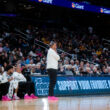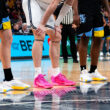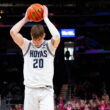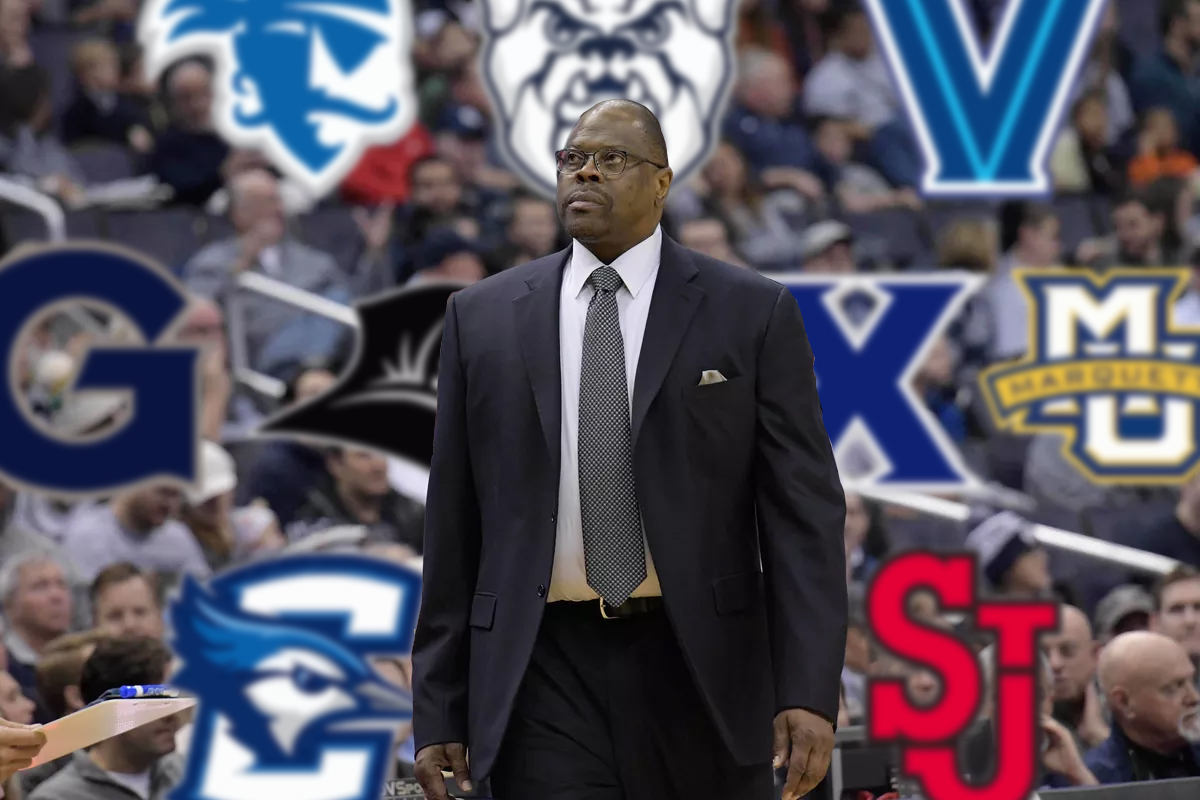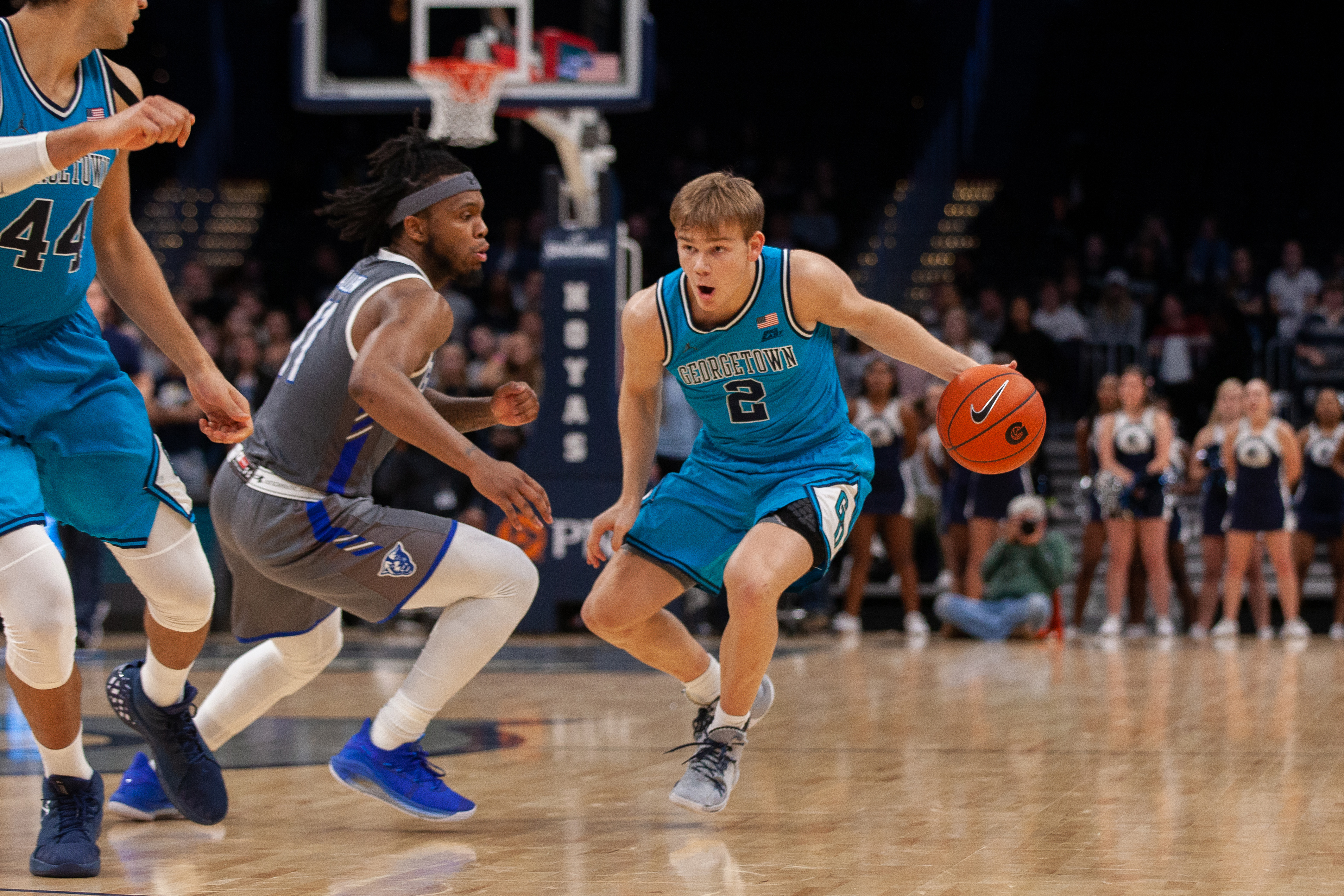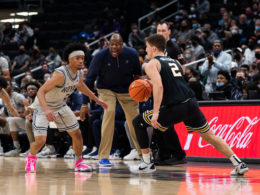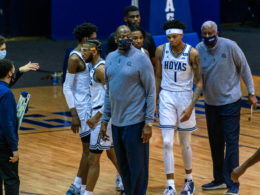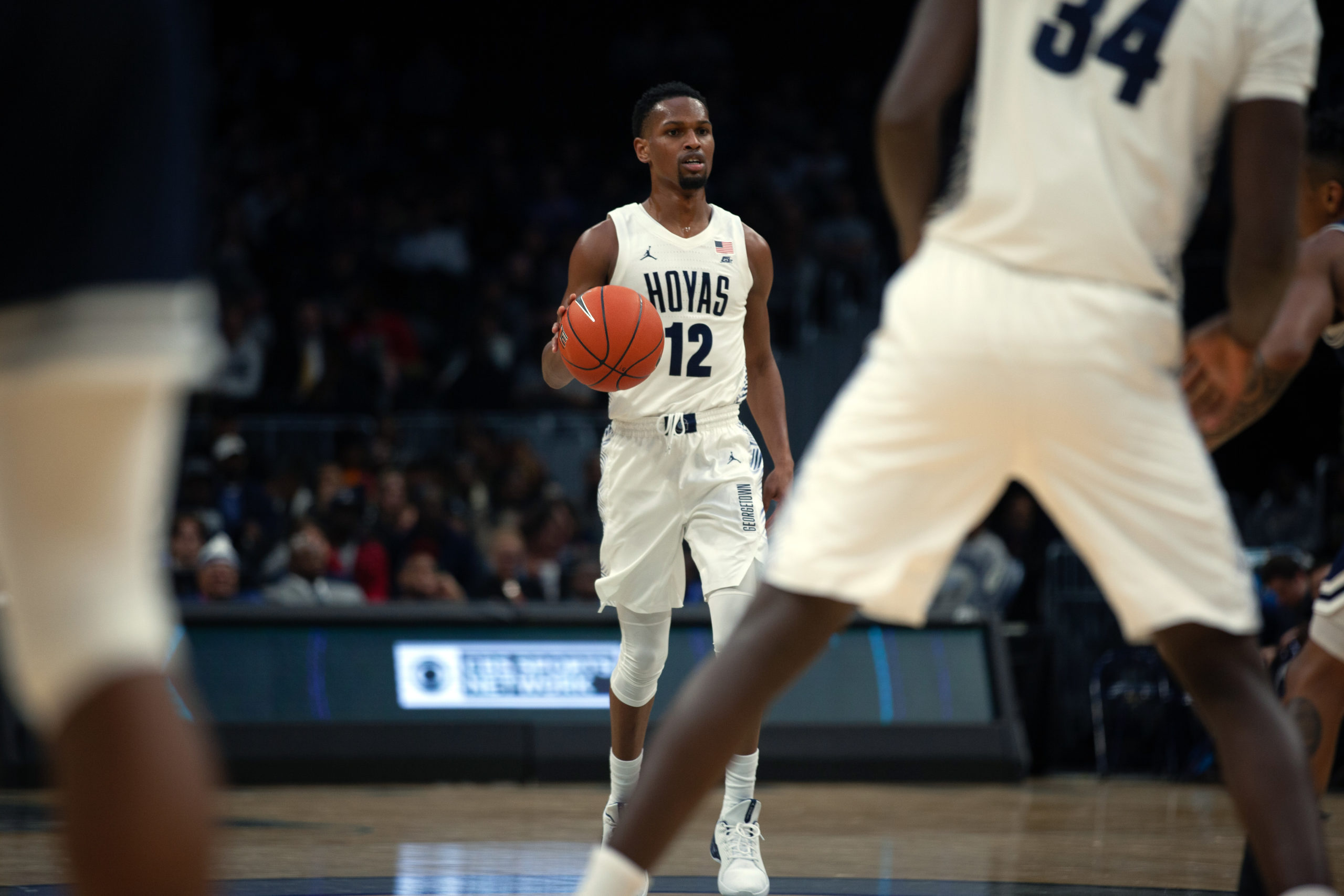The Big East is back. Was it ever really gone?
After fielding two NCAA Tournament number one seeds (and national champion Villanova) in 2018-19, the Big East experienced a down year last season. Still, the return of number of the league’s top players from a year ago have experts confident that the conference will return to national prominence this season.
Fasten your seatbelts and hold on tight for a look at each Big East team, along with our projected order of finish within the conference.
Projected Order of Finish:
(10) St. John’s
Though sneaking into the NCAA Tournament play-in game last season, there is no doubt that St. John’s is in rebuild mode. Last year’s 21-13 record looks a lot prettier than it was considering the Red Storm beat up on a weak non-conference schedule en route to a 12-0 record heading into conference play.
Former Arkansas coach Mike Anderson replaced Chris Mullin as head coach, who stepped down after last season. Additionally, the Johnnies lost leading-scorer and primary ball handler Shamorie Ponds to the NBA. Returnees L.J. Figueroa and Mustapha Heron were inconsistent last season, but will need to step up and shoulder much of the load this time around. A lack of height may also hurt St. John’s in the Big East, as the Johnnies’ tallest player stands at just 6’9”.
(9) DePaul
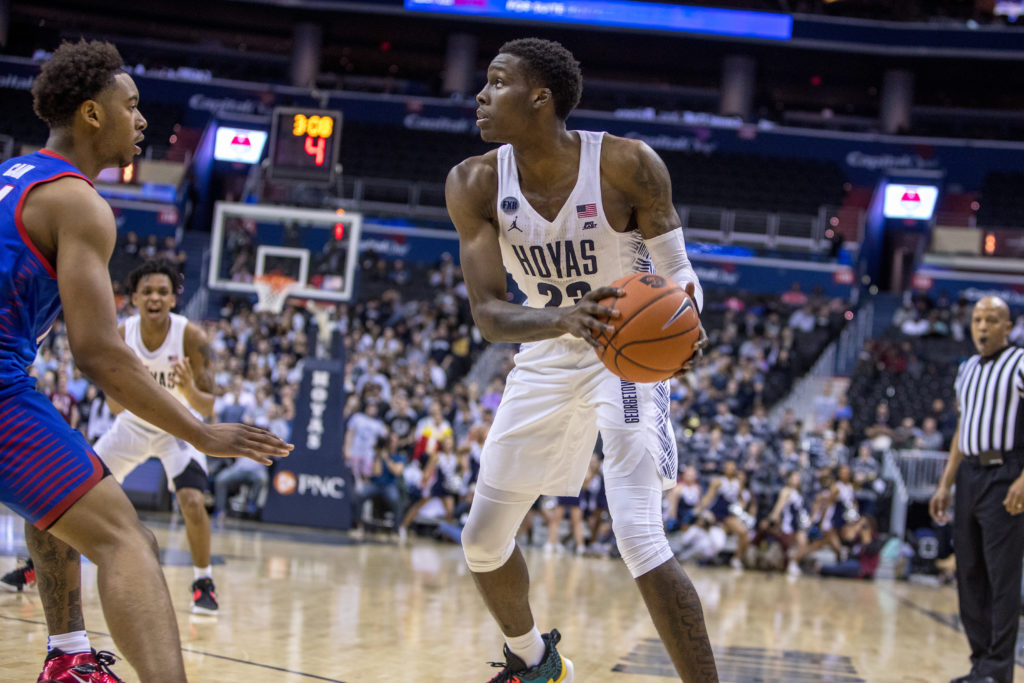
Big East fans love to trash on DePaul, (and usually rightfully so) but the Blue Demons may have taken some steps in the right direction heading into the 2019-2020 season. Yes, they did lose their three leading scorers from last season, but the doesn’t mean there isn’t reason for optimism.
Junior forward Paul Reed showed flashes last season, almost averaging a double-double (13.3 ppg and 9.0 rpg) in conference play. Coach Dave Leitao also brought in transfer guard Charlie Moore from Kansas and two top-50 recruits in guard Markese Jacobs and forward Romeo Weems. Still, there are a lot of moving pieces coming together, and might not be until next year that we can expect to see results (unless Jacobs or Weems leave after just one year). Expecting anything more than a finish in the cellar of the Big East conference is asking a lot of DePaul.
(8) Butler
Butler uncharacteristically finished with a losing record of 16-17 and eighth place in the Big East in Coach Lavall Jordan’s second season. Preseason First Team All-Big East selection Kamar Baldwin is back for his senior year, along with a number of other contributors.
The Bulldogs did lose guard Paul Jorgensen to graduation. While this may not seem like a huge loss on paper, Jorgensen was a consistent presence for Butler who could be counted to knock down the big shot. The Bulldogs will look to replace Jorgensen with four-star shooting guard Khalif Battle, who looks to be much more of a threat off the dribble.
Despite some offensive uncertainty outside of Baldwin, the number one priority for Jordan and Butler will be reestablishing Butler as the defensive-minded team that limited Duke to 61 points in the 2010 National Championship game. Derrik Smits, a 7’1” transfer from Valparaiso will help in this effort and be a big boost on the glass. Overall though, Butler’s overreliance on Baldwin will likely rear its ugly head in the grind that is conference play and the Bulldogs will struggle to consistently win games.
(7) Marquette
Yes, Marquette did finish in second place in the Big East last year with a 12-6 record. But does losing six out of their last seven games (including postseason) last year inspire confidence? Over this stretch, the Golden Eagles were a defensive catastrophe and their offense simply consisted of letting Markus Howard launch contested 24-footers.
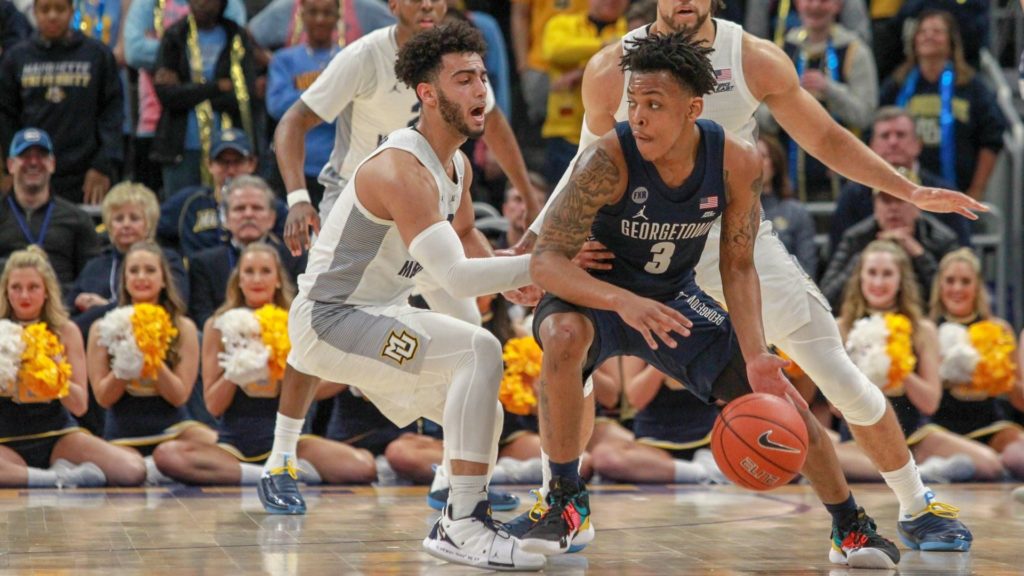
Coupled with that, the talented Hauser brothers both transferred after last-season (which may or may have been connected to Howard’s decision to return). With Sam and Joey Hauser now gone, there is a massive hole in Marquette’s frontcourt, especially on the offensive side of the ball. Theo John is an elite defender, but doesn’t contribute much when it comes to scoring.
As for Howard, there’s no question that he’s a capable scorer. But if you had a chance to watch even one Marquette game last season (at least towards the end of conference play), it was clear that Howard was trying to do too much. Over the team’s final 7-game stretch, Howard attempted nine or more three-pointers six times, making no more than four attempts in any game. With even fewer weapons to work with this year, Marquette will live and die by Markus Howard’s play. Not a great recipe for consistent success in the Big East.
(6) Creighton
No matter what their roster looks like, Creighton somehow always finds a way to win games. Maybe it’s the coaching of Greg McDermott and his staff, or maybe it’s the fact that teams need to travel all the way to Omaha to face the Bluejays. Despite Creighton not having the most flashy roster, this year should be no exception.
With Martin Krampelj gone, the backcourt of Ty-Shon Alexander and Marcus Zegarowski should be the focal point of the Bluejays’ offense this season. Alexander led the team in scoring last season and Zegarowski showed himself a capable distributor and scorer in his own right from the point guard position his freshman year.
Unfortunately for Creighton, the lack of a reliable big man will likely be a limiting factor. The Bluejays may catch fire from three-point range in enough games to keep them relevant, but expect a finish similar to last year’s 9-9 conference record.
(5) Providence
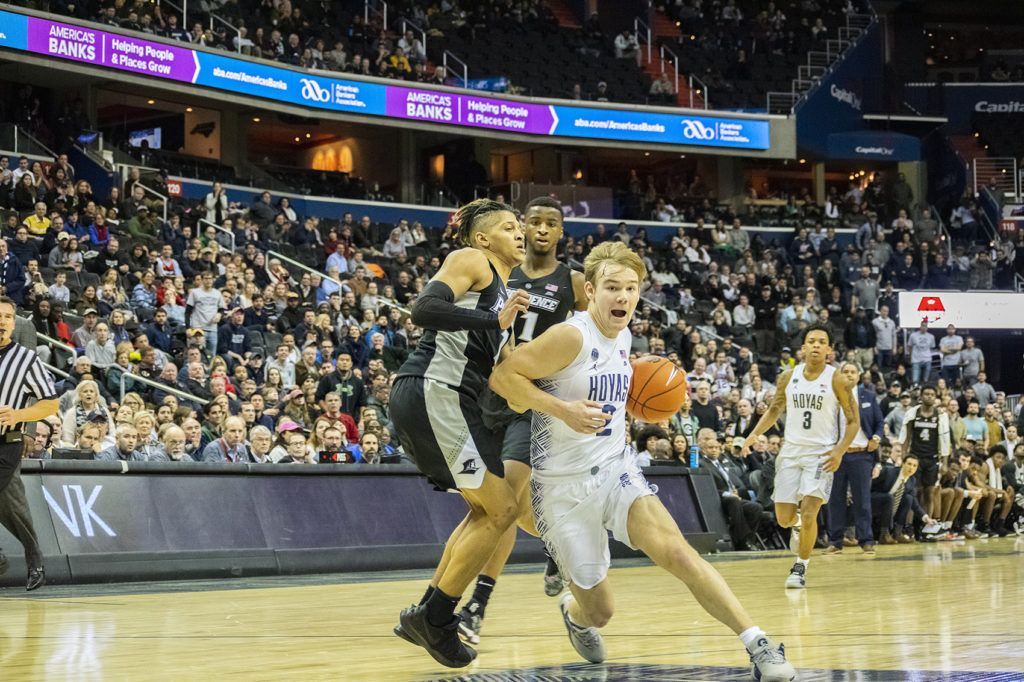
Providence is a team expected by many to make a big jump this season from last year’s 7-11 conference record. The opportunity certainly is there with the return of leading scorer Alpha Diallo and big man Nate Watson, as well as the possible emergence of A.J. Reeves and David Duke in their second seasons.
Reeves’ improvement or lack thereof will likely be what makes or breaks this team. He showed promise early last year, but following a mid-season injury, Reeves reached double digits in just two of the teams last 14 games. Although the Friars added quickness and a capable distributor in UMASS transfer Luwane Pipkins, Providence will need Reeves’ three-point shooting ability to space the floor.
The leadership of Diallo and Watson combined with the talent of the sophomore guards will likely result in an improved year for the Friars. A return to the NCAA Tournament should be the goal for Ed Cooley’s team, and a middle of the pack finish in the Big East would likely do that.
(4) Georgetown
With four starters returning (including three Big East All-Freshman Team members from last year) and a handful of impact transfers, it seems likely that Georgetown will take another step forward this season. For a look at each of these players and the role they will play this year, be sure to check out the rest of our Preseason Preview that will continue into next week.
Still, the new Hoyas will need to adapt fast to the physicality of Big East basketball, with the team’s toughest stretch coming right at the start of conference play. To begin, Georgetown will play three out of their first four games on the road against some of the best teams in the conference in Providence, Seton Hall and Villanova. The learning curve may be steep for some of the newcomers, but look for sophomore guards Mac McClung and James Akinjo to shoulder much of the load. Even if they start slow, Georgetown has enough talent to play with anyone, and thus anything below a top-five conference finish would be a disappointment.
(3) Villanova
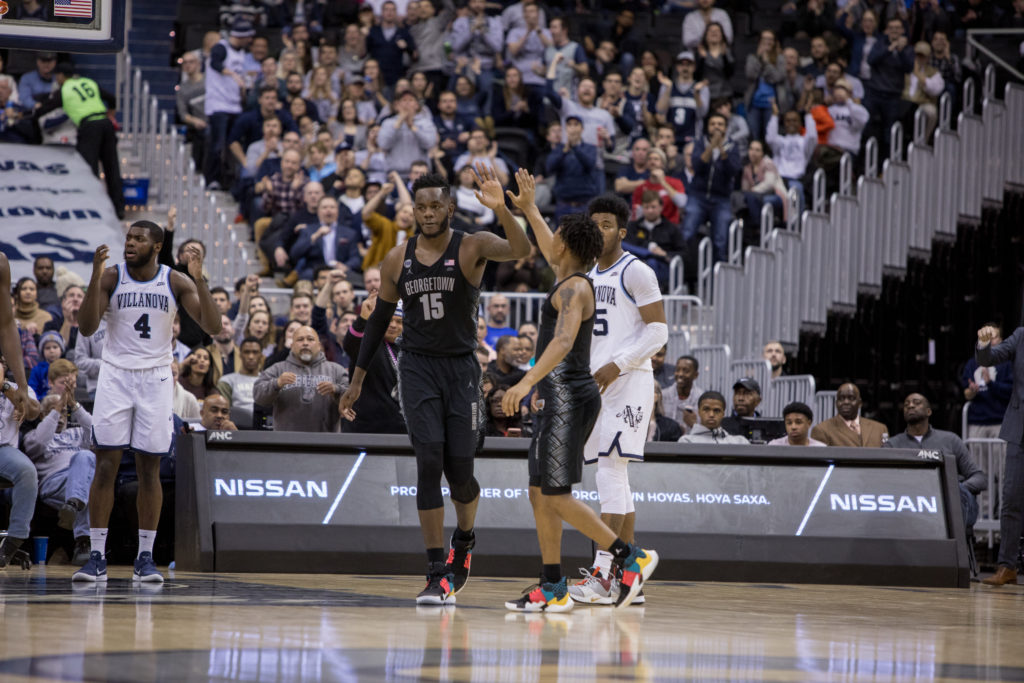
Some may be surprised to see Villanova this low on the list (at least for a team that’s won 13 or more conference games each of the past six seasons). But this is not the same Villanova team of years past.
To start, ‘Nova stands apart from other Big East contenders in that they return relatively little experience after losing two senior leaders in Phil Booth and Eric Paschall. Junior guard Collin Gillespie will look to fill the leadership void, but backcourt depth could prove an issue should Gillespie get injured (he’s already been plagued by plantar fasciitis and suffered a broken nose this fall). Five-star freshman guard Bryan Antoine may be asked to handle a lot early on in his college career.
As for the frontcourt, the Wildcats may be in a better position. They return three big men who played significant minutes last season, highlighted by the versatile Saddiq Bey, who should take a big step in his second year under Jay Wright. Wright also brought in five-star forward Jeremiah Robinson-Earl, who was named Preseason Big East Freshman of the Year at Media Day. In short, ‘Nova’s half-court offense will likely run through its bigs, but Coach Wright will need to find some reliable ball-handlers to deal with the more up-tempo teams the Wildcats will face.
(2) Xavier
Xavier is another team getting a lot of preseason hype, but deservedly so. The Musketeers turned a corner midway through conference play last year, and did not look back. In their last nine Big East games of 2019 (including the BE Tournament), Xavier notched seven victories. Part of that was due to the play of forward Naji Marshall, the team’s leading scorer (14.7 ppg), who will return for his junior year.
Despite losing big man Zach Hankins to graduation (finally), the Musketeers found a capable replacement in Jason Carter, a grad transfer from Ohio University. Carter adds an inside-out threat play alongside the 6’9” bruiser Tyrique Jones.
In their second year under coach Travis Steele, Xavier looks to take a big step forward, and the Musketeers will likely be dancing in March.
(1) Seton Hall
Seton Hall will once again be the Myles Powell show, but when you have the returning Conference Player of the Year, that’s not necessarily a bad thing. Powell will be asked to do a lot this year, but his ability to create his own shot anywhere on the court, and his composure in the clutch render him more than up for the challenge.
Unlike Marquette’s Markus Howard, Powell will have some help as the Pirates return plenty of pieces from last year. Per Isaac Trotter of 247sports, Seton Hall ranks second amongst major conference teams in percentage of scoring returning from last year at 87.7%.
This includes guard Quincy McKinght, who will look to cut down on turnovers from last year, and forward Sandro Mamukelashvili who will both play important complementary roles this year. The size of graduating senior Michael Nzei will be more than replaced by 7-foot Florida State transfer Ike Obiagu. Obiagu averaged 2.1 blocks per game last year, and will thus likely add elite rim-protector to Seton Hall’s defense.
It’s easy to forget that Seton Hall showed flashes of brilliance last year, such as a neutral-court win over Kentucky last December. This year may be when it all comes together. Kevin WIllard has already shown his aptitude as a coach, and he now has the talent necessary to stage a national title run.
Taking a step back
Looking at each team individually, there is no doubt that the conference has improved overall from last year to this one. Gone are the days of (admittedly stupid) arguments that the Big East is a mid-major. Don’t be surprised if the Big East is a six bid conference come March.
